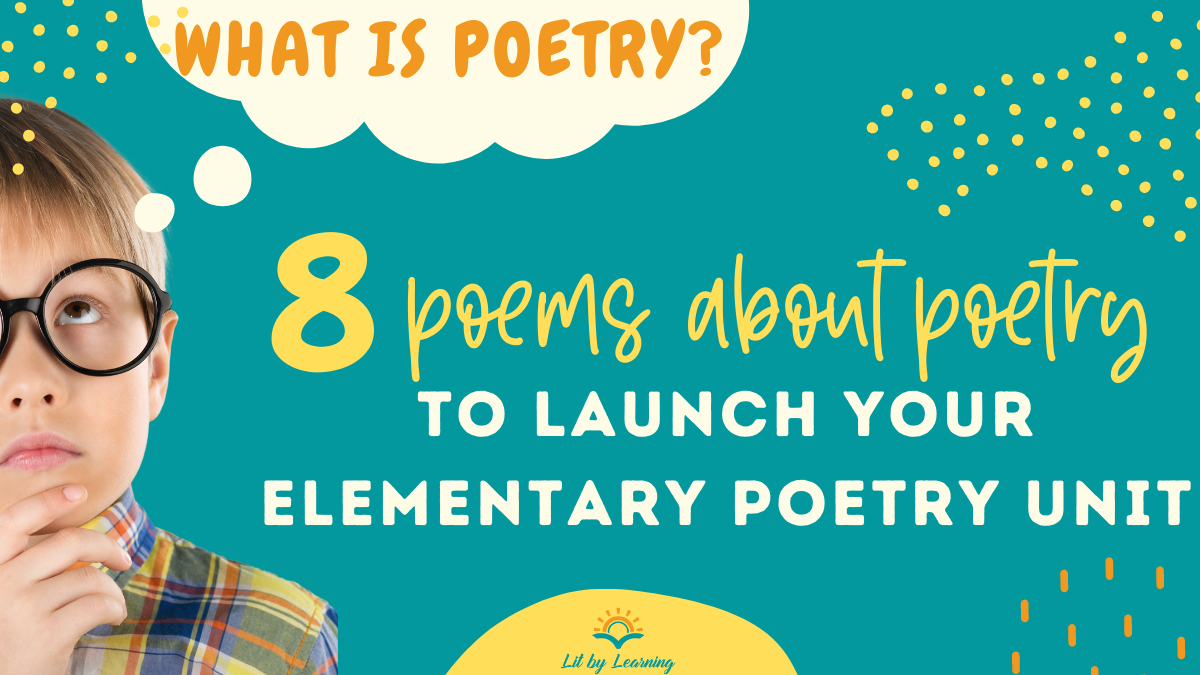How will these poems about poetry help your elementary students understand what poetry is?
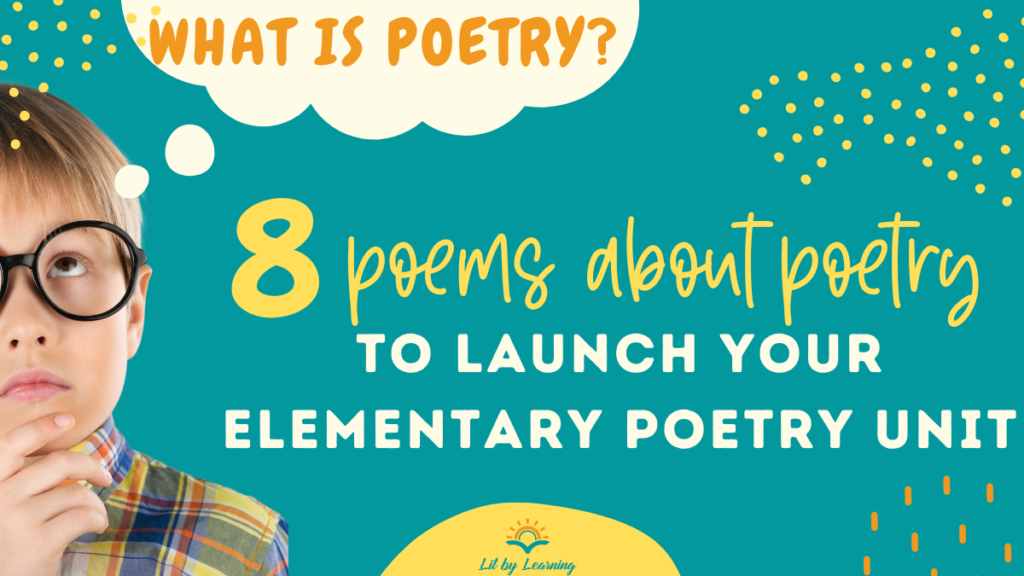
What is poetry? A good question.
What counts as poetry? What is the definition of poetry? Twelve years in, I still haven’t found the definite answer to these questions. Folks can really get into the nitty-gritty of what “counts” as poetry and what falls short. That admitted I have devised a way to put this integral question back into my students’ hands. Instead of diving straight into the content of poetry, we spend 3-5 days exploring what poetry is from the most direct source: poets themselves.
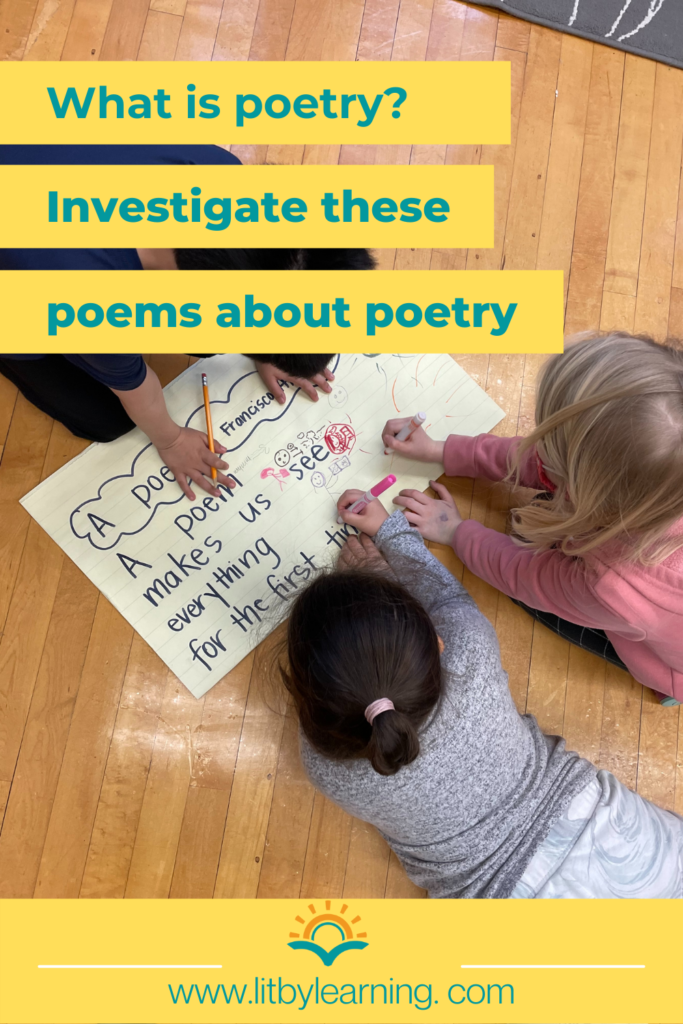
Why poems about poetry?
Who better to teach about what poetry is than poets? What better way to teach the definition of poetry than through poems? Indeed, poems about poetry help students explore this question while inviting rich conversations about form, structure, and “rules.”
“The Coolest Job in the World” by Lisette Norman
This fun narrative poem about poetry and being a poet is published in the book “My Feet Are Laughing,” a collection of poems I highly recommend adding to your classroom library shelves. Through the work, students will hear the speaker’s excitement for poetry and get ideas of what poetry can be about (hint: it’s anything!).
When I grow up I want to be a poet and write all day long
I will paint pictures with words.
I could write a poem about what makes me happy,
like when Pop takes us to the park.
I can describe anything that I see,
like when a bumblebee kisses a tall sunflower.
“To write Poetry” by Francisco Alarcon
This poem is featured at the very outset of Alarcon’s spring poems collection “Laughing Tomatoes.” Visually organized in a rectangular shape framing two students, the poem emphasizes the importance of each word in a poem.
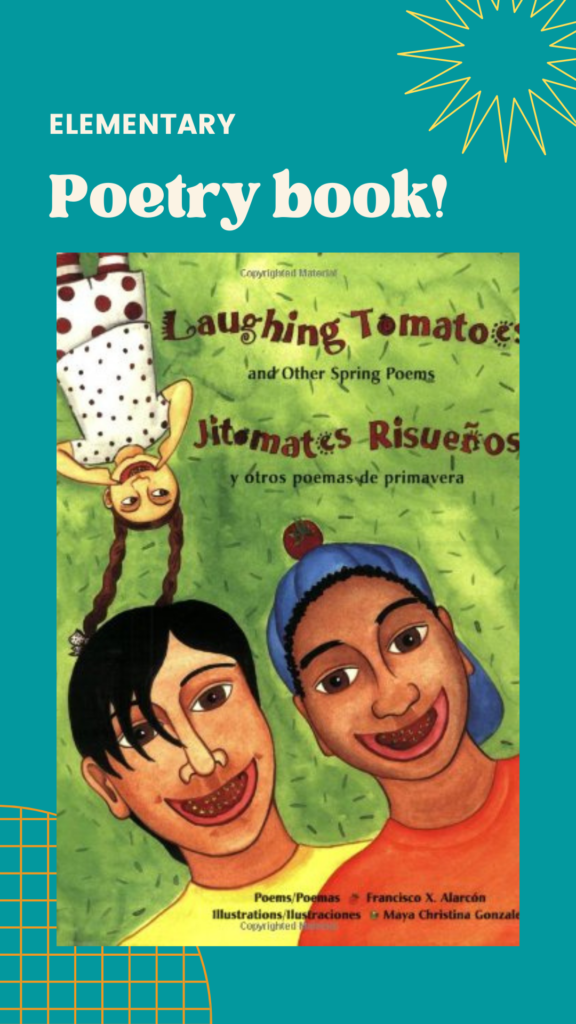
“The Poet’s Pen” by Mahogany L. Browne
Published in the amazing anthology “Woke: A Young Poet’s Call to Justice,” this beautiful poem contrasts silence with the power of using your voice through poetry.
A silence can sound like many things.
That is why we choose to write
poems as a people’s almanac
for those unable to speak.
“The Poet’s Pen”
“The Blue Alphabet” by Marjory Wentworth
This poem is published in the fantastic book, “Out of Wonder: Poetry celebrating poets.” I love the way that this poem shows the art of poetry. Through references to painting, students easily visualize the creative aspect of putting words together in poetry.
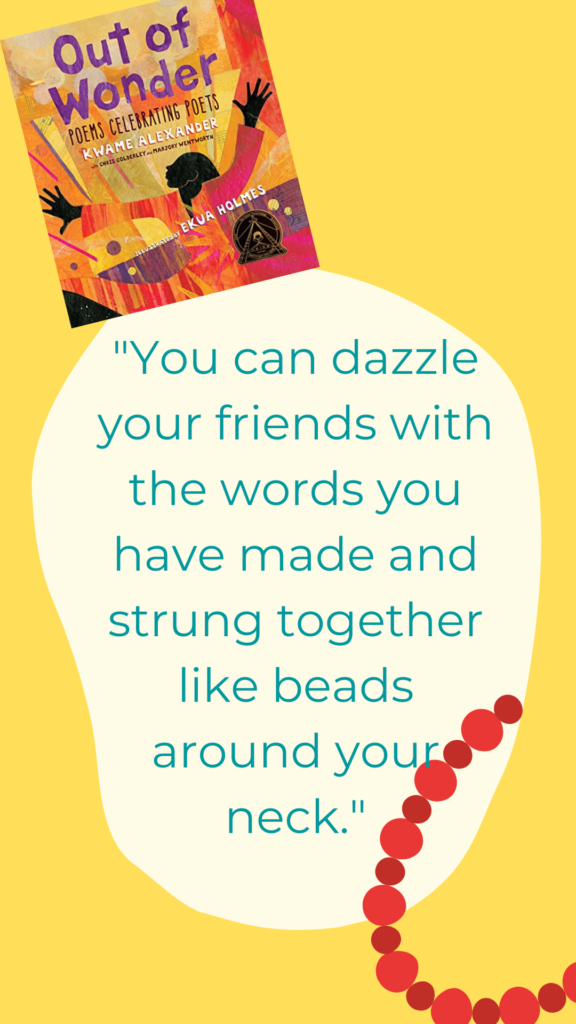
“How to Write a Poem” by Kwame Alexander
This gem is also a part of the “Out of Wonder” publication, this time celebrating Naomi Shihab Nye. Speaking directly to poets, this poem about poetry gives directions for crafting their next work. This poem emphasizes how poetry makes space for different perspectives – different “voices” to be heard.
Hush.
Grab a pencil
some paper
spunk
“How to Write a Poem”
“Snapshots” by Chris Colderley
This poem about poetry is a third work from “Out of Wonder,” this time written by Chris Colderley in celebration of Nikki Giovanni. Its beginning lines are an invitation to students to remember that poetry can be anything they can see – or imagine. The use of ellipses emphasizes that poems are often mapping trains of thought.
people forget… poetry is not just words on a page… it is…
“Snapshots”
“How Billy Collins Writes a Poem” by Marjory Wentworth
This 4 stanza poem found in “Out of Wonder” is a reminder that even the most banal things are poem-worthy. Written in honor of Billy Collins, the poem emphasizes how everyday observations sometimes make the most relatable poetry.
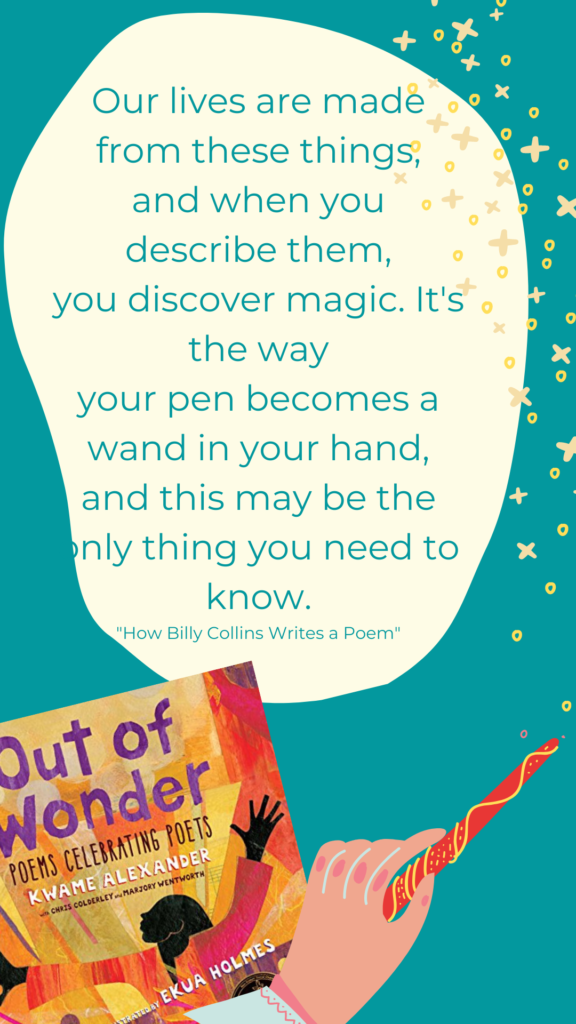
“Poem by Poem” by Juan Felipe Herrera
This beautiful poem about poetry, available online, underscores the power of poems to change the world. With references to the 2015 Charleston Church Massacre, it starts with the powerful line: “poem by poem, we can end the violence.”
These are my favorite children’s poetry books – read more about some of them here!
Looking for more about teaching poetry in your elementary classroom?
Make sure to check out this blog post about my favorite free online poetry resources. Or, head to this post to read about how I use poet Amanda Gorman’s works for cross-curricular inquiries!
Lit By Learning Resources
If you haven’t already, head over to grab your mini-inquiry guide & printables for this What is Poetry? exploration here!
Looking for resources to help you teach poetry in your elementary class? Check out my Analyzing Poetry Pack. If you’re looking to go deep with poetry analysis PLUS an author study, I hope you’ll consider my Amanda Gorman Mega Bundle, including a virtual library for your students to explore!

